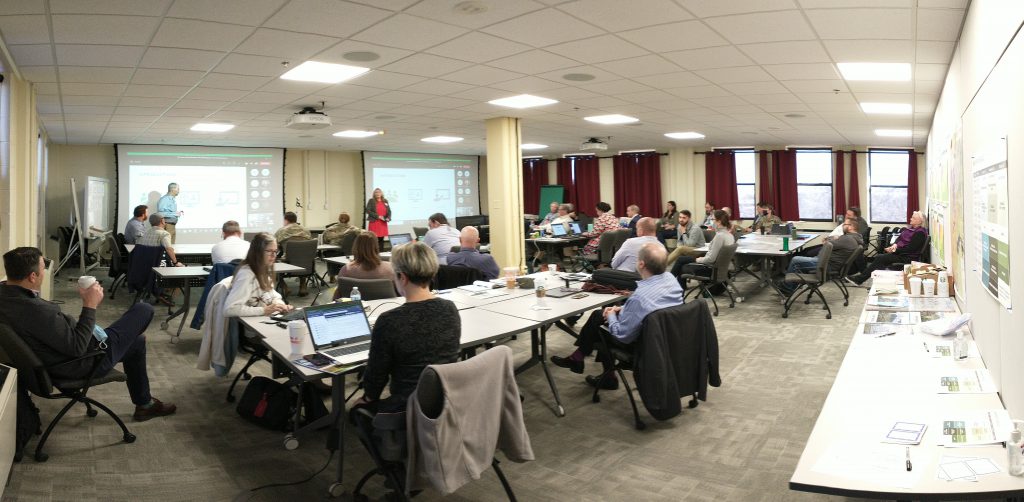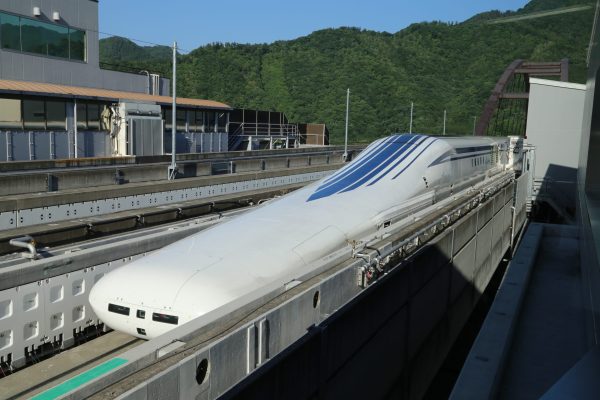By Rachel Wiggins, P.E., M.SAME, and Rachael Richter, AICP, M.SAME

A first-of-its-kind Climate Resilience Plan for Fort Carson and the Piñon Canyon Maneuver Site provides a path forward for the installation to identify and address climate-related risks through the Real Property Master Plan.
Climate resilience has been identified by the highest levels of the U.S government as a key priority to address through planning and infrastructure investments. Congress, further recognizing the effects of climate change on mission readiness, passed legislation formally requiring that climate resilience be addressed in the Real Property Master Plan at all military installations. These national conversations and resultant defense-wide and service-specific mandates have prioritized addressing climate resilience throughout the Armed Forces.
Recently, U.S. Army Installation Management Command initiated an Installation Climate Resilience Plan (ICRP) at Fort Carson and the Piñon Canyon Maneuver Site, both located in Colorado. This effort was designed to meet the climate requirements set out in the National Defense Authorization Act for both FY2020 and FY2022, and codified in 10 U.S.C § 2864 (c). To address climate resilience at these locations, the Army convened, both in-person and virtually, approximately 100 stakeholders across all echelons of the enterprise—from the forester at Fort Carson and regional wildfire working group members to the Assistant Secretary of the Army for Installations, Energy, & Environment. These representatives cooperated on a first-of-its-kind plan that provided a path for Fort Carson to address climate resilience holistically in the Real Property Master Plan by identifying climate-related risks at both locations, assessing risk levels for each climate hazard, and recommending mitigations and real property investments designed to reduce those risks.
IDENTIFYING CLIMATE RISKS
The decision was made early in the planning process to put the ICRP into the vernacular of Army leadership and tie climate hazards to mission risks. As a result, the study was designed to utilize the Army’s five-step risk management process.
The plan assessed a broad range of climate hazards, including wildfire, heat, flooding, drought and water supply, severe weather, land degradation, and energy demand. These hazards were informed by the Department of Defense Climate Assessment Tool (DCAT), an online resource that aggregates authoritative climate data to provide an understanding of current and projected exposure at installations across the U.S. and overseas.
DCAT data was supplemented by the Fourth National Climate Assessment, historical storm event data from the National Oceanic & Atmospheric Administration, relevant state plans for Colorado, and local hazard mitigation plans for the Colorado Springs area. Data from Fort Carson, such as the Integrated Wildland Fire Management Plan, also were leveraged to inform climate risk.
The team identified climate trends by assessing historic weather patterns alongside climate projections. Regional trends included an anticipated increase in wildfire danger, resulting from the following three major trends: changes in winter and spring precipitation; increasing high temperatures; and major shifts in vegetation types due to drought conditions.

ASSESSING CLIMATE HAZARDS
The project team used the Army’s Risk Matrix to assess each climate hazard at Fort Carson and Piñon Canyon Maneuver Site. Inputs to the assessment included available authoritative climate projection data, stakeholder interviews, results from a stakeholder workshop, and subsequent research and evaluation conducted by the project team.
Each of the relevant climate hazards was assessed through a risk lens to identify the likelihood and severity of such events taking place, resulting in a finding that wildfire is the highest risk at Fort Carson and Piñon Canyon. According to the Storm Events Database, operated by the National Oceanic & Atmospheric Administration, wildfire has been one of the most devastating climate effects in El Paso County, Colo., with 19 wildfires in the last 30 years resulting in two deaths and more than $1 billion in property damage. Flooding, heat, and severe weather followed wildfire as high risks. For example, flooding has taken six lives in the last 30 years and caused nearly $57 million in property damage. Other severe weather (such as hail and lightning) has taken seven lives and caused nearly $350 million in property damage.
DEVELOPING CONTROL MEASURES
The ICRP report is supplemented by a robust Implementation Plan, which identifies a total of 120 strategies to address climate resilience. Of these, 39 are already underway and documented as a baseline. Ongoing efforts include incorporating daily weather briefs into training plans, exploring energy source diversification with the local utility, and siting on-post facilities to reduce climate effects related to flooding and ecosystem preservation.
The remaining 81 strategies are categorized by priority and grouped from immediate requirements to longer-term needs.
- A total of nine immediate actions were identified, each tied directly to the life, health, and safety of soldiers and their fami- lies at Fort Carson and those training at Piñon Canyon. Notably, the total cost of these immediate actions was less than $500,000, indicating that many short-term opportunities to buy down risk exist, including a recommendation that severe weather training for personnel headed downrange be refreshed and re-emphasized.
- Short-term infrastructure investments totaling $1.3 million were recommended. The type of work ranges from using smart meters to limiting the use of gravel and turf grass.
- Numerous short-term recommendations also were addressed through a follow-on project to update the Installation Planning Standards, addressing buildings, streets, and landscape standards for all new projects on the base. These updates were made in the months immediately following the completion of the ICRP and included refreshing the plant palette to ensure local water conditions are addressed; updating building spacing commensurate with firescaping recommendations; and utilizing lighter colored materials for roads and buildings.
- Mid-term infrastructure investments were also recommended. Totaling $5.6 million, this work includes burying overhead electrical lines along key corridors and increasing shade and tree cover for personnel and water bodies.
- There was a single long-term recommendation: that mission- critical facilities be moved from climate-impacted or climate- exposed areas and repurposed for less mission-critical uses.
IMPLEMENTATION & EVALUATION
The ICRP provides an initial baseline assessment and was designed as a living document that can be actively managed and updated to counter evolving risks and requirements as well as to project progress. For example, successful mitigation and adaptation strategies may reduce a risk posed by a climate hazard. This could lead to the installation rebalancing priorities to focus on other climate hazards in the future.
To facilitate the long-term success of the ICRP, the Implementation Plan was developed as a tracking tool that can be used to monitor and report on implementation progress. Metrics can be pulled to include the number of recommendations implemented, the number of climate hazards addressed, and total dollars spent on these efforts.
Numerous short-term recommendations were addressed through a follow-on project to update the Installation Planning Standards, addressing buildings, streets, and landscape standards for all new projects on the base.
Collectively, the adaptation and mitigation strategies identified in the Fort Carson and Piñon Canyon Maneuver Site pilot study will ensure that planning and infrastructure investments not only protect and preserve taxpayer investments, but, importantly, protect and preserve life, health, and safety of those training, working, and living at these sites.
Infrastructure Enhancements. The recommended strategies will inform Fort Carson’s future resiliency capitalization efforts— the plans for capital funding needed to ensure infrastructure is climate resilient. Like many infrastructure projects, it is anticipated that some of these investments can be made in tandem with lifecycle recapitalization and major facility renovations.
The Army issued a memorandum with interim guidance for ICRPs during the study process, mandating that a working group make initial assessments of possible climate impacts on installation missions (including military operations, training, logistics, real property, energy/utilities, environmental, and emergency management). The working group will be responsible for assessing installation risks and identifying resilience measures to mitigate these risks.
Commensurate with this guidance, a key study recommendation is the convening of an Installation Resilience Council to guide the successful implementation of the ICRP’s recommendations.
IMPORTANT STEP FORWARD
As the Army’s first ICRP, this plan not only addresses climate hazards at Fort Carson and Piñon Canyon, but also serves as the model for other installations across the service. The plan is designed to be implementable, with an easy-to-replicate process that has already been used to assess six additional Army installations.
Additional Priority Installations. Building on the momentum of the pilot study in Colorado, Installation Management Command began ICRPs at several additional priority locations. These ICRPs will be completed in summer 2023 at locations ranging from the interior of Alaska to Texas and will be used to further define and refine the ICRP methodology, including the use of the risk management process and authoritative climate projection data.
Beyond the local efforts at these and many other bases, it is anticipated that changes will be required at the enterprise level as well, including updates to regulations, instructions, and standard building designs in order to address climate resilience in a holistic manner. In addition, funding will need to be identified for climate resilience projects or prioritized and directed from existing funding streams.
Further study will enable the Army to identify the cost of infrastructure and staff resources needed to buy down climate- related risks and identify how best to balance these important investments with long-term lifecycle decisions.
Rachel Wiggins, P.E., M.SAME, is Senior Planner, and Rachael Richter, AICP, M.SAME, is Director of Federal Planning, Michael Baker International. They can be reached at rachel.wiggins@mbakerintl.com; and rrichter@mbakerintl.com.
More News from TME
-

Developing a Maglev Network for National Defense
A transportation network leveraging superconducting magnetic levitation technologies would bring benefits for logistics, surface transportation, and energy storage, as well as strengthen national defense priorities and the defense industrial base. -

Fulfilling the Mission
Rear Adm. Dean VanderLey, CEC, USN, Commander, Naval Facilities Engineering Systems Command, sits down with TME to discuss the Department of the Navy’s Systems Command for shore facilities and expeditionary equipment, Naval Facilities Engineering Systems Command (NAVFAC) and its varied responsibility that directly support warfighter lethality. -

Strengthening Installation Energy Resilience Through a Community of Practice
The Military Energy Resilience Catalyst strengthens installation energy resilience by providing opportunities for energy practitioners to develop professionally and connect with experts, senior leaders, and colleagues.